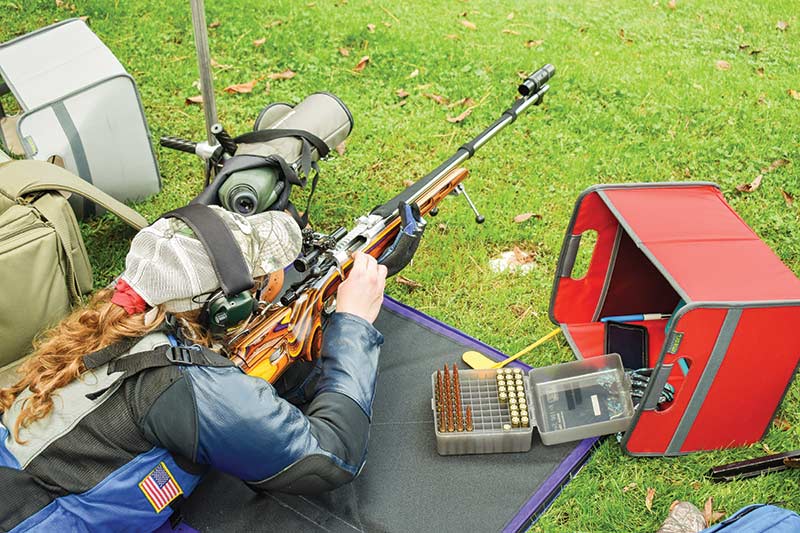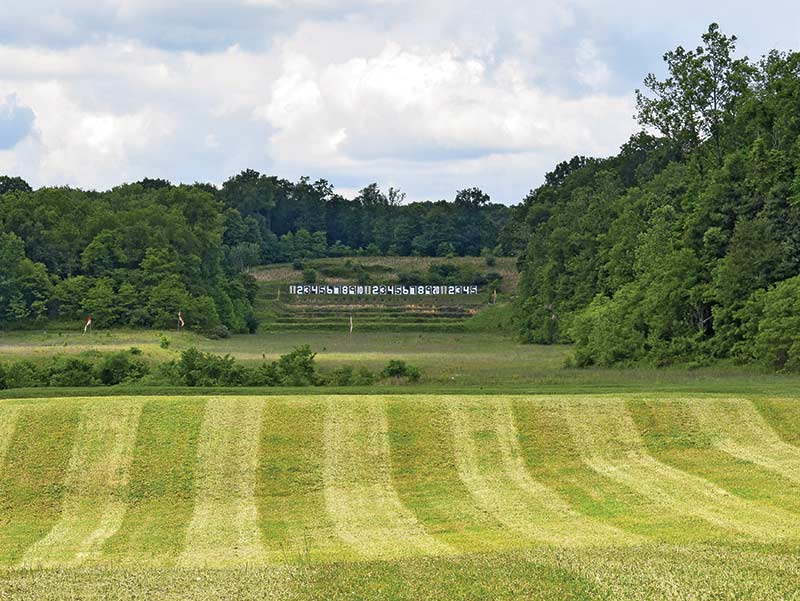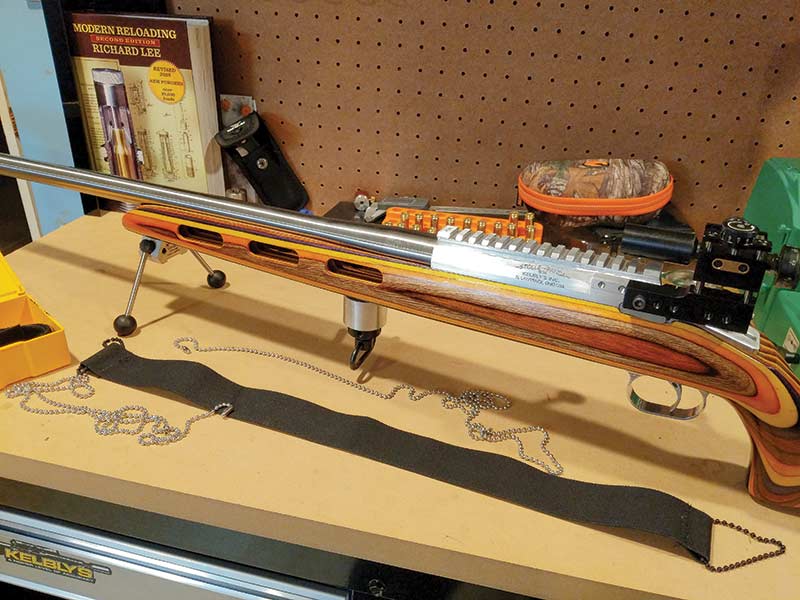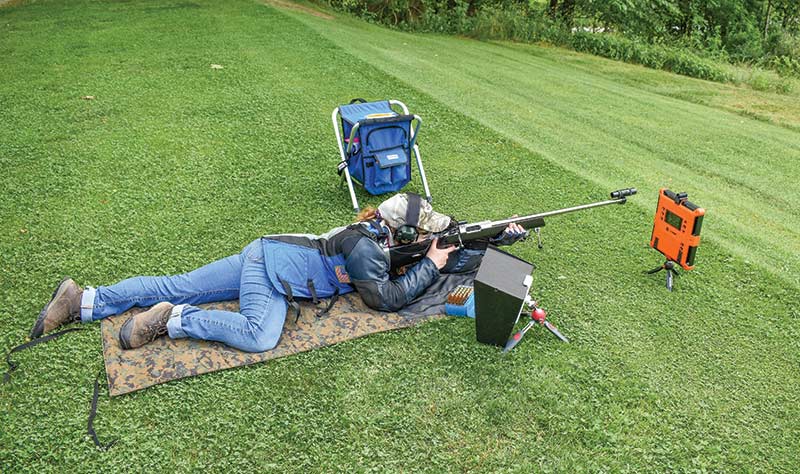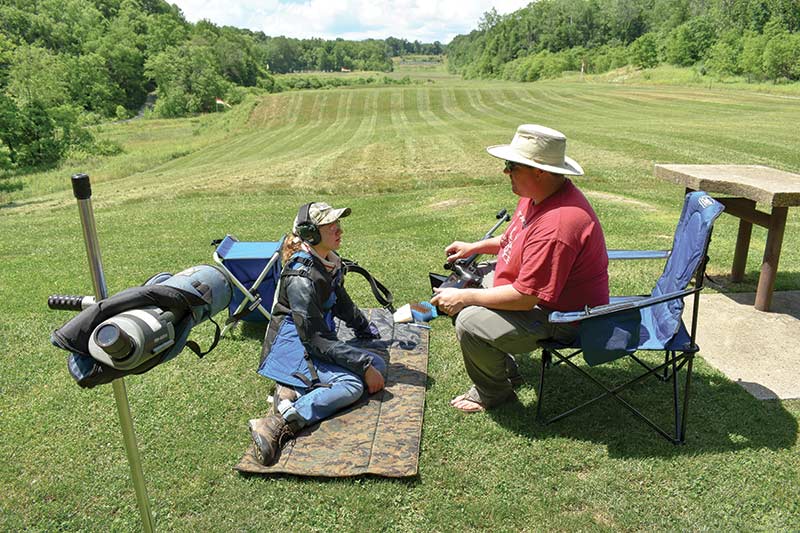Category: All About Guns
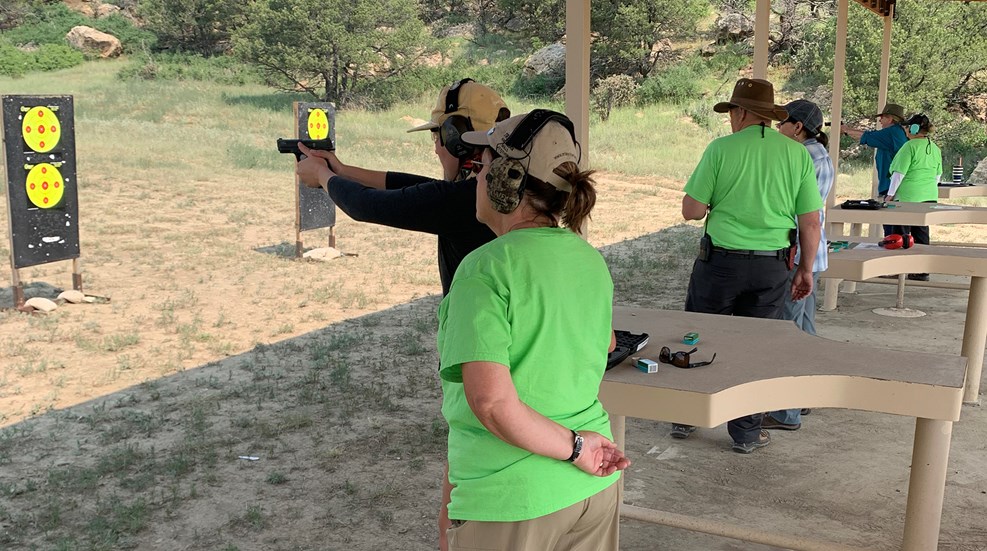
Firearm sales are continue to be brisk, with more people purchasing their first firearm—one third of them by women in 2021. Many are seeking formal training to learn the safe and responsible use of that firearm. As instructors, we only get one chance to make a good first impression. I strive to make that first contact with new gun owners a positive, memorable and impactful experience. As exciting as this first impression can be, it can take a hard left turn quickly!
The last thing we want to do is to overwhelm or intimidate a new firearm owner with too much information, or talk or train too high over their head. And we certainly don’t want them to leave. With that in mind, here are six instructor stereotypes to avoid when conducting a beginning firearms class.
1. The Tactical Instructor
This instructor conducts his or her class in tactical gear. There is definitely a place for this gear, equipment and accessories if you are teaching a tactical class and have advertised your training as such. However, meeting new firearm owners for the first time is not the place to gear up. This can be a quick turn off for someone who knows nothing about firearms and is only seeking the introductory basics.
2. The Open Carry Instructor
Open carrying a firearm may be appropriate for advanced classes, but it can be very intimidating to a new gun owner. New gun owners may be anxious about their new purchase, and possibly nervous at the thought of taking a class on firearms. An instructor who is wearing a gun, visible on their belt in a holster, or one strapped to their thigh, may be very distracting to a novice student. A new student may be too focused on the firearm on your belt to hear what you are saying.
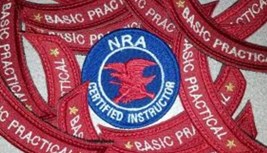
3. The “Patch Collector” Instructor
Yes, it is very impressive that you have spent many years and invested a lot of money to advance your firearm training, knowledge and credentials, gaining patches and certificates along the way. Although something to be proud of, these highly decorated shirts or vests may have an opposite effect when working with new firearm owners. I used to teach in a decorated instructor shirt, displaying my patches of credentials, until a few students told me they were intimidated by all the patches on my shirt. I now wear a simple “Instructor” T-shirt purchased from the NRA Store to make students feel more at ease.
4. The “All About Me” Instructor
We’ve all been there—sitting in a class, training or meeting where the speaker is more interested in sharing his or her personal stories rather than staying on topic. The reason someone signs up for training is to gain knowledge about a particular item or topic. A few relevant stories here and there may be appropriate during the lesson, but straying off topic and boasting personal stories is not. This is a huge turn-off, especially to a brand-new gun owner seeking knowledge about their new purchase. There is a distinction between an instructor sharing their credentials and credibility for speaking to the topic at-hand, versus standing on a platform and touting story after story.
5. The Graphic Instructor
I recently attended an event advertised to recruit new women gun owners. The classroom was filled with eager-to-learn ladies who were brand new to firearms. Before even discussing firearm safety or going over the basic gun parts, the instructor started telling these new gun owners why they needed to use hollow-point bullets, and described the physical damage they can cause. This was just the beginning of the “blood and gore” class. I knew from the looks on the faces of these ladies that they had already tuned out the instructor. Some of the women left after break time, and others commented, “I just don’t think this is for me.”
6. The Confusing Instructor
The terms we use matter. Instructors need to use the correct vocabulary when teaching. For example, avoid referring to cartridges as bullets or describing magazines as clips. Firearms have their own language. I was once talking about the different magnum revolvers and using the phrases “.357 Mag,” “.41 Mag.” and “.44 Mag.” A student raised his hand and asked what a “mag” was. I realized that I was abbreviating “magnum,” which was confusing my students. Instructors should also avoid using the word “weapon” when referring to a firearm with new gun owners, which may be very intimidating to someone in a basic firearms class.
If you are fortunate enough to help new firearm owners become familiar with their new purchase and comfortable on the range, it is important to remember one thing: Teach and train at their level. Remember how long it took you to get to the level you are with your firearms knowledge and handling. We want these brand-new gun owners to have a positive first experience, so they recruit more new gun owners to share the knowledge, skills and proper attitude!
The jaws immediately drop. “You shoot 1,000 yards? With iron sights?” It’s amazing how many people think it’s impossible. With the rise in popularity of “long range” shooting, classic disciplines like Palma have been forgotten. While competing with the AR-15 — originally with iron sights, then with a 4.5x optic — I attended 600-yard mid-range matches to better my prone skills. Farther down the firing line, on the 1,000-yard range, I would admire the beautiful stocks of incredibly long barreled bolt-rifles, wondering at the nearly clean scores fired by competitors.
I first heard of Palma from my junior coaches. They spoke of their student, Eric Eilberg, and of his travels with the Young Eagles Team. It seemed mystical. I never imagined being able to travel to shoot. I wasn’t involved in Olympic-sanctioned shooting sports. My discipline of choice, High Power, is relatively niche and not offered at high school or college levels but the first time I heard Palma, I wanted to be like Eric. I wanted to join the Young Eagles team, shoot as well as he and have the opportunity to experience new things.
Brief History
The first Palma Trophy match was held in 1876 in New York as part of the centennial celebration of U.S. independence. Five countries competed in the inaugural match — Australia, Canada, Ireland, Scotland and the United States. The U.S. claimed top honors. More countries have joined, competing in world shoots held every four years. The Palma Trophy Match course of fire is two sighting shots and 15 shots for record at 800, 900 and 1,000 yards on an NRA-LR target. The 44″ aiming black holds the X, 10, 9 and 8 rings with a 20″ diameter 10-ring and 10″ X-ring.
There are two governing Palma rulebooks from the National Rifle Association (NRA) and International Confederation of Fullbore Rifle Associations (ICFRA). Both require metallic sights and allow .223 or .308 caliber rifles. ICFRA rules require a bullet weight no greater than 91 grains for .223 or 156 grains for .308. NRA has no bullet weight restrictions.
Getting There
My training routine was firing over a hundred rounds a week in the summer, sometimes more and I began competing at Alliance Rifle Club in Malvern, Ohio. There I became friends with two incredible long-range shooters and coaches — Chuck and Kim Rowe. They impressed on me how important it is to have goals and warned me not to spread myself thin over different disciplines. Being the best at one thing takes dedication. When I began considering Long Range, Kim told me I wasn’t allowed until I earned my Distinguished Rifleman’s badge in Service Rifle. She may have been kidding, but I wasn’t about to find out.
The Rifle
Four years passed before I began preparing myself for the next step in my shooting career. My dad encouraged me to take advantage of the opportunity while I had it, though I still was unsure of the future and apprehensive about spending money while in school.
You do not purchase a Palma rifle online or from a gun store. Palma rifles are custom-built, handed down, or purchased secondhand from a competitor. In my case, someone leaving long-range shooting wanted his equipment to go to someone young who could keep the sport alive. I purchased a Warner #2 rear sight, a Stallings Right Sight with an iris and an old McMillan black prone stock.
I had several pieces to the puzzle, but not all. Putting together a top-of-the-line rifle is expensive, especially for a freelance writer in college. I am incredibly grateful to Krieger Barrels, Kelbly’s and Bullet Central whose sponsorships helped me fill in the blanks. In September of 2019, I earned my Distinguished badge in service rifle, the green light to start into something new.
Several people were consulted during the decision process as I considered a true Palma rifle or a generic long-range rifle. One person suspected I would be unable to handle the recoil of the .308. I ultimately decided to join the Young Eagles team and would need a .308. I also remembered “if Kim could shoot a .308, I could too.” I selected a 30″ 1:13 twist Krieger Barrel with a medium Palma contour. Kelbly’s chambered the barrel and installed one of their classic actions, the Big Bore Panda. Bullet Central donated a single-stage Bix’n Andy Remington 700 Benchrest Competition trigger.
First Shots
I did not want to jump right into a match. Eric helped me boresight the rifle, approximate eye relief and break in the barrel. We used a Shotmarker electronic target at 600 yards. This allowed him to coach me from the firing line. I spent more time the first day working on position and adjustments than shooting. First and most important lesson of Palma: Make the gun fit you, do not fit yourself to the gun. This means if something is uncomfortable or doesn’t seem right — do not keep shooting! Stop and fix it. Second lesson of Palma — this process never ends. Buttplate positions, aperture sizes — what is best will change by the day depending upon the range and light conditions.
Accessories
Small things make a difference. I borrowed handstops and slings from fellow shooters and am still determining what works best for me. Palma allows competitors to use a hook to secure the sling to their shooting coat. A separate coat allows you to keep your sling ready to go. A local leathersmith cut my coat’s collar so it didn’t ride against my neck when I lay down and added a buckle to keep my shoulder pad from bunching. These seemingly minor changes help ensure you place the rifle in the same spot every time.
Your mat also makes a huge difference. I am a smaller-framed person. The thin, rollable mat I use for High Power began to bunch up underneath me as I fired, altering my position. I quickly learned a sturdier, thicker folding mat works much better. Currently, I use the Creedmoor quad fold shooting mat. It has a waterproof vinyl bottom, a double layer of foam for extra support under the elbows and doesn’t move when I shoot! Even changing your mat makes a difference in position and the buttplate location — take nothing for granted.
Serena And Goliath
One size does not fit all. The Rowes mentor me, adjust my position and give me tips. They are well-decorated shooters, members of the U.S. National Rifle Team and Chuck is also a coach for the National F-Class team with Kim the team adjutant. They first noticed I needed a mirage band. My first few shots were level but began to scatter as the heat from the barrel distorted my sight picture. A mirage band, ceiling fan chain and cut off scope mount solved the issue. Even so, I consistently fired worse shots the more I took.
By the time I fired 15 shots I was near tears. Each shot sent the rifle stock smashing into my collarbone. Scared I could not handle the recoil, I should have listened to the advice I received but suffered through it. My enthusiasm waned, though I tried to hide it. With a 14″ LOP stock it was nearly impossible for me to see through the sights. I also needed a rear sight extension, exacerbating the problem. I compensated by placing the buttstock far on my collarbone and letting it absorb the recoil.
Tired of bleeding through my shirt every match, Chuck convinced me to try one of his spare stocks, a petite Masterclass copy too small for him. It was much shorter and slighter — not only easier for me to grip but more comfortable. They were both bedded for Kelbly’s big bore panda actions so the switch was easily made. He graciously traded stocks with me — the black synthetic stock Chuck named “Goliath” for the colorful laminate one which remains nameless.
Starting out, you cannot be afraid to change and try new things. Go to local matches. Talk to competitors. Before you buy all of your equipment, ask to borrow things to see what you like and need. Looks don’t matter. It was hard for me to give up the black stock I had become attached to, but Chuck and Kim were right — I was miserable. Though I’m not at the top of the leaderboard, I’ve been able to improve and enjoy small successes, including joining the Young Eagles team.
Shooting the MP40 Submachine Gun

ALBANY, NEW YORK -(Ammoland.com)- Gun Owner of America (GOA), Gun Owners Foundation (GOA’s nonprofit), and Ukrainian immigrant Ivan Atonyu have filed suit over the new firearms restrictions passed by New York State after the New York State Pistol Rifle Association v. Bruen Supreme Court Decision.
In the Bruen decision, the court struck down New York State’s “proper cause” clause in its concealed carry law. Under the old “Sullivan” law, the state could decide who could and couldn’t carry a firearm outside the home.
The law was passed in 1913 by the Irish to prevent newly arriving Italians from carrying guns.
In a 6-3 opinion written by Justice Clarence Thomas, SCOTUS ruled the law was unconstitutional, and Americans have the right to carry a firearm outside the home for self-defense.
Notorious anti-gun New York Governor Kathy Hochul called an emergency session of the New York Legislature to pass a slew of anti-gun bills known as the “Concealed Carry Improvement Act” (CCIA) to try to negate the Supreme Court’s decision even though the Justices explicitly warned the state NOT to do that in the opinion. The new laws made New York even more restricted than before the court handed down the Bruen decision.
The Justices said guns could be banned in certain “sensitive places” such as schools or government buildings but said just because people gather in certain areas, that could not be used to deem a place “sensitive.” The legislature ignored that part of the ruling. It declared Time Square, sidewalks with permitted events, any private business that doesn’t post a gun allowed sign, anywhere there is alcohol served, and many other places as “sensitive,” including areas surrounding the new sensitive areas.
These new laws eliminated almost all locations where a citizen could carry in the state.
Gun Owners of America contends that by expanding “sensitive places” to such a vast number of locations, New York State is violating the Second Amendment under the Bruen decision. The gun-rights group claims that this move is blatantly unconstitutional and violates the Second Amendment rights of its membership base.
GOA also contends that New York State replaced “proper cause” with “good moral character.” Anyone that wants to carry a gun will have to turn over all social media posts and give four-character references to the state. The state will be the sole arbiter if someone is of “good moral character.” The gun-rights group claims this violates not only the Second Amendment but also the First Amendment because it infringes on the free speech and the free expression of the gun owner who wants a permit.
Any social media post could be used to disqualify a gun owner from carrying a gun in public.
A meme shared on a private Facebook page could disqualify a gun owner from being able to carry a firearm outside their home. Gun Owners of America consider this to be draconian and stifling to the rights of gun owners.
The lawsuit also highlights that law enforcement opposes the laws. The Governor is demanding law enforcement enforce the anti-gun laws. The New York Sheriff’s Association has released statements objecting to the law, which it sees as unenforceable to unconstitutional under Bruen.
This suit is the Second Lawsuit by Gun Owners of America in a week. The first is challenging the new rule surrounding the ATF’s attempt to redefine a firearm. Neither the ATF nor New York State has responded in either case.
Ivan Antonyuk, Gun Owners Of America .v York State Police
About John Crump
John is a NRA instructor and a constitutional activist. John has written about firearms, interviewed people of all walks of life, and on the Constitution. John lives in Northern Virginia with his wife and sons and can be followed on Twitter at @crumpyss, or at www.crumpy.com.

Send it!

